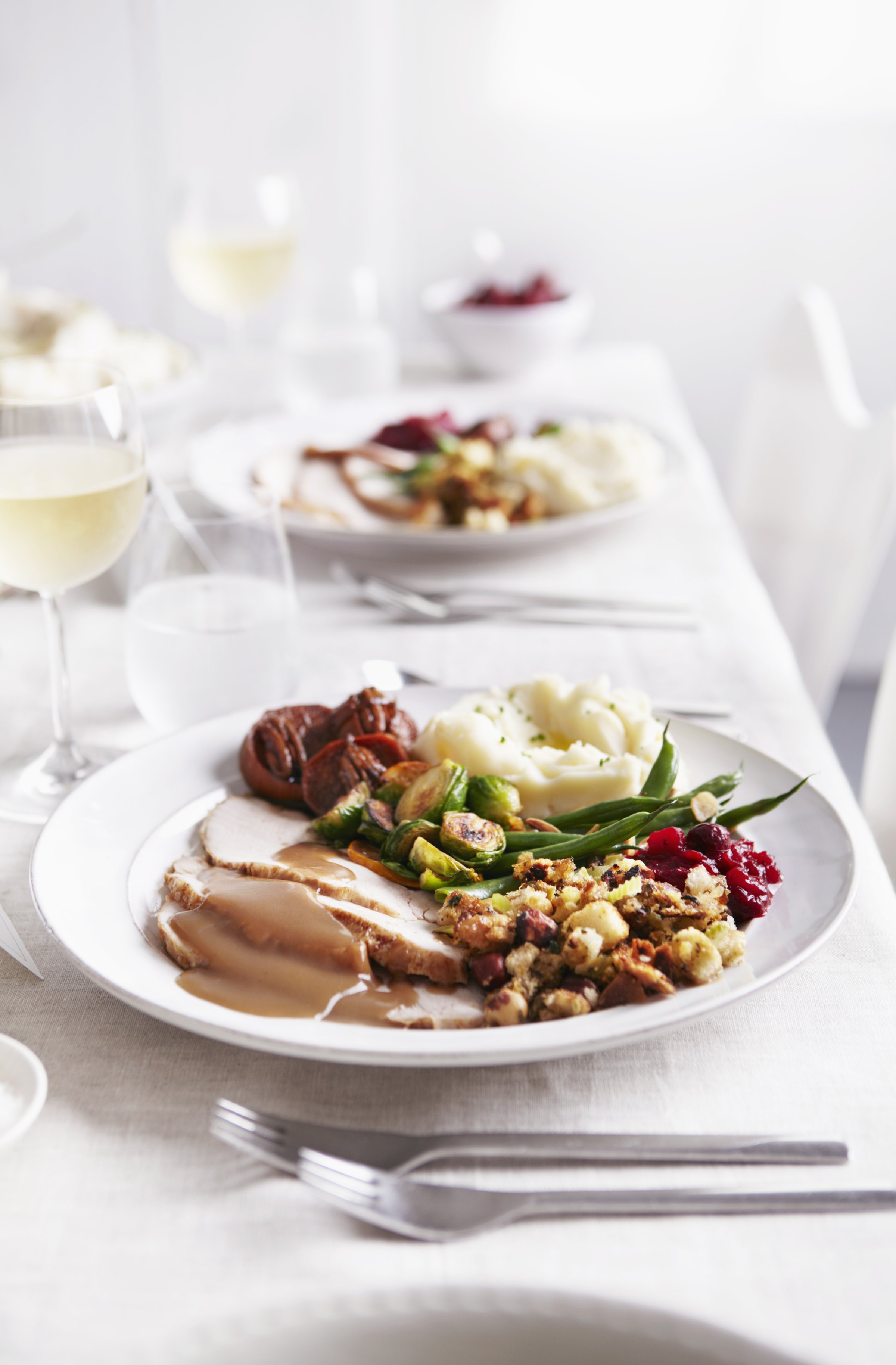
Thanksgiving betrays a need — which we see throughout American history — to create a shared national identity. And, in this case, we have addressed that hunger by creating shared food traditions. Because very little is known about what actually happened at the “first Thanksgiving,” we’ve been free to commemorate it based on what we’ve needed it to look like over time.
Most of what is known about the foods of the “first Thanksgiving” is based on what foods were common at that time in the region, and a letter written by Edward Winslow to a friend in England describing the feast in 1621. Winslow wrote that Governor Bradford of the Plymouth Colony sent men out to hunt wildfowl (most likely goose or duck) while Wampanoag Indians brought deer to the feast. While turkeys were plentiful in New England in the 1620s, historians agree that it is unlikely that they were the centerpiece of the “first Thanksgiving.” Turkeys were hard to catch and the meat was tough. Fish, however, would have been plentiful and almost certainly part of any harvest celebration.
Cranberries were native to New England and would have been in the native diet in the 1620s, so they could have been part of the Thanksgiving meal, too. We also know that pumpkins, a type of squash, were eaten in 1620s New England, though there was no flour and hence no pies.
With very little historical basis on which to create a shared national holiday, America needed someone to tell them how the holiday should be celebrated. And Sarah Josepha Buell Hale was just the woman for the job. Hale was the editor of Godey’s Ladies Book, a very popular women’s magazine of the mid-19th century.
She first wrote about the Thanksgiving meal in her novel Northwood: A Tale of New England, published in 1827. She described a “lordly” roast turkey at the head of the table, “sending forth the rich odor of its savory stuffing.” Her meal included “a sirloin of beef, flanked on either side by a leg of pork and a joint of mutton,” and “pies of every description known in Yankee land.”
This vision of the overflowing feast represented mid-19th century ideals of the woman’s role in creating a perfect home and her writings created the “classic” American Thanksgiving ideal. As the United States was divided by the Civil War, Hale wrote a letter to President Lincoln urging him to make the day a national event, one that would bring Americans together. On October 3, 1863, Lincoln did just that.
As America entered the 20th century, Americans tweaked their Thanksgiving food traditions to reflect the modern vision of America. Progress, innovation, and technology all became part of the Thanksgiving table. Cranberries too delicate to transport long distances from New England started getting packaged and canned in 1912, under the name Ocean Spray Preserving Company. Now cranberries could enjoy a longer shelf life and become fixtures on the Thanksgiving table far away from cranberry bogs. The vast majority of pumpkins grown in America today are turned into canned pumpkin puree, which takes away the need to bake and mash a real pumpkin for pie. So nowadays our Thanksgiving feast is as much a tribute to the mid-20th-century modernist ideal as it is to a 19th-century idealized view of our 17th-century origin story.
My Thanksgiving meal this year is going to be a mash-up. I can’t give up the canned cranberry sauce, even though locavores might shudder at the idea. But I’ve also ordered a “heritage” turkey — a bird that has more in common with a wild turkey than a Butterball — and added fish to the menu as a way to give those around my dinner table a taste of what the Pilgrims might have tasted back then. And I’m also going to add some mutton, as a nod to Hale’s Northwood feast. Thanksgiving not only reflects who Americans are, but also how creative we can be in putting new twists on old experiences.
Susan Evans is program director of the American Food History Project at the Smithsonian’s National Museum of American History. She originally wrote this piece for What It Means to Be American, a national conversation hosted by the Smithsonian and Zócalo Public Square.
More Must-Reads from TIME
- Why Biden Dropped Out
- Ukraine’s Plan to Survive Trump
- The Rise of a New Kind of Parenting Guru
- The Chaos and Commotion of the RNC in Photos
- Why We All Have a Stake in Twisters’ Success
- 8 Eating Habits That Actually Improve Your Sleep
- Welcome to the Noah Lyles Olympics
- Get Our Paris Olympics Newsletter in Your Inbox
Contact us at letters@time.com